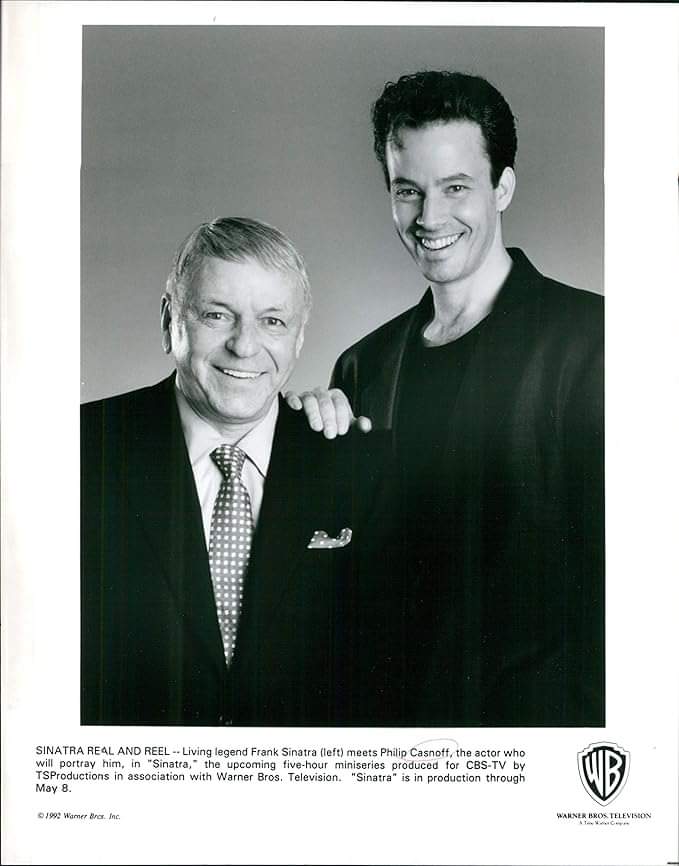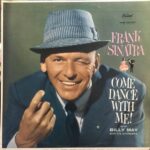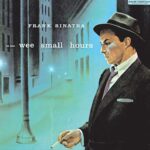
THE LAST YEARS OF FRANK SINATRA
by Mahnuel Munoz
CHAPTER 5
In the first minutes of 1992, journalist Bill Boggs looks out the window of his apartment next to Central Park at the fireworks with which New York City welcomes the new year. He uncorks a bottle of champagne and turns on the radio. He smiles at the coincidence when he hears Frank Sinatra’s voice singing “I get no kick from champagne…”.
On New Year’s we all make a list of good resolutions. Boggs decides that for him 1992 is going to be the year of Frank; he will go see him perform as many times as possible. It is not an idea that comes out of nowhere. Boggs has been a fan of Frank Sinatra since his adolescence, when he heard some of his records and had the opportunity to see him perform in the sixties at the 500 Club in Atlantic City. Already a renowned journalist, he managed to interview him on television in December 1975. Throughout the year, Boggs would fly to London to attend two concerts at the Royal Albert Hall; He will then travel to Atlantic City to see two more concerts, coincide a business trip with a performance of the Voice in Los Angeles and finally buy tickets to three shows at Radio City Music Hall. His pilgrimage in Frank’s footsteps will be the culmination of a cathartic process that began by resigning from an alienating and uncreative job and continued with the leap into the void of starting one’s own business. He was inspired by Frank’s courage:
“This year, when I looked at Frank up close, with that face that now looks like luminous granite under the spotlight, I realized a valuable truth: you are very powerful as long as you know how powerful you are. That intrinsic belief was the energy that baffled and seduced me as a teenager.”
FRANK SINATRA RADIO
Fortunately, and paraphrasing Sinatra himself, for Boggs 1992 ends up being “a very good year.”
In 1992, Frank finally gave the go-ahead to his daughter Tina to make a project he had been working on for almost a decade, the biographical miniseries “Sinatra”. With a script by William Mastrosimone, a duration of four hours and a budget of $18.5 million, the series covers the period from Frank’s childhood to the iconic “The Main Event” concerts at Madison Square Garden in 1974. Originally, Tina had wanted Frank to write his autobiography, but the artist refused. denied, claiming that “I could fill volumes but the most important part of my life would be lost. “My music, my songs.”
Filming begins in February and airs in November on the CBS network. It is a well-made product, in fact it has a high budget close to nineteen million dollars. It wins the Golden Globe for best television miniseries and obtains a total of nine Emmy nominations, winning two, for best direction and best costume design. Philip Casnoff, a good actor and veteran of television productions and musicals on Broadway, is responsible for bringing Sinatra to life. “Phillip captured my father’s trait, the essence of him,” Tina said. “Even though I felt confident, I wanted someone else to see the audition tape. I chose Sydney Poitier, who was impressed.”
Marcia Gay Harden plays Ava Gardner and Olimpia Dukakis plays Dolly, Frank’s mother. Actor Tom Burlinson voices him in the younger Sinatra’s songs, offering a reasonably similar timbre. For the rest of the musical setting he uses Frank’s original recordings.
Curiously, the series doesn’t pay much attention to the singing Sinatra. The center of interest falls on films and concerts, so the artistic portrait of Frank remains incomplete. Mastrosimone’s script is quite truthful and does not avoid the singer’s relationships with the mafia, his temperamental outbursts and even his compulsive appetite for the opposite sex. Obviously liberties are taken to present a whitewashed vision of Sinatra’s life, and the last chapter has too rushed a development to reach the conclusion of the story. But I still think that it is a series that deserves to be known and enjoyed. Unfortunately, according to Tina, Frank likely never watched the entire series because of what she perceives as interference from Barbara Sinatra. “Dad should have seen “Sinatra” in a safe and supportive environment. “If he had seen it with my mother, I think he would have enjoyed every frame.”
THE LAST YEARS OF FRANK SINATRA
During the first third of the year, Frank continues to devote himself to the task that makes him happiest and gives more than twenty concerts in the United States, with the presence of the comedian Charlie Callas or the singer and actress Shirley MacLaine. But again death unfurls the shadowy mantle of him. On May 6, the day he turned 75, Jilly Rizzo, a close friend of Frank, is killed in Rancho Mirage, California, when a drunk driver crashes into the vehicle he was in. Upon receiving the news, Frank literally collapses to his knees and cries uncontrollably, unable to assimilate what has happened.
Jilly had been his right-hand woman since the early sixties, accompanying him to all his important appointments, making cameos in several of his films, and even Sinatra mentioned him in several of his songs. On the 10th, another great friend of Frank’s, singer Sylvia Syms, suffers a fatal heart attack during a concert at the Algonquin Hotel in New York.
The next day, heartbroken, Frank attends Jilly’s funeral ceremony at Saint Louis Church in Cathedral City. More than a hundred attendees gather, mostly celebrities from music, film and high society, as Jilly is highly esteemed in the Palm Springs community. At the end of the event, as the coffin leaves through the church aisle, a recording of Sinatra’s beautiful song “Put Your Dreams Away” plays in the background. The love that Frank feels for his friend is such that Jilly’s mortal remains are buried near the graves of Frank’s parents in Desert Memorial Park.
And in opposition to the rigors of the scythe, the music does not stop and comes to Sinatra’s rescue. From the end of May until June 9 he tours Europe making stops in London, Barcelona, La Coruña, Porto and Athens. When he returns home he takes a fifteen-day break to be able to complete the rest of his busy schedule.
FRANK SINATRA RADIO
The aforementioned vision and memory problems that afflict him are not an obstacle for him, at least, to put his full intention into renewing his repertoire for a series of five recitals at the Stars’ Desert Inn in Las Vegas. In a rehearsal on June 24, Frank and the orchestra try to revive songs like “I’ve Got My Love To Keep Me Warm”, “Imagination”, “Young At Heart” or “It Might As Well Be Spring”, which little or nothing had been part of their live repertoire. It is evident how difficult it is for the singer to get hold of the lyrics and tones of the melodies, and finally the convenience of sticking to what is known is assumed, something that, on the other hand, does not bother the public or critics, who surrender to the inextinguishable charm of the teacher:
“No, it wasn’t nostalgia. It was not loyalty or respect for age.” – wrote Leonard Pluma in the “Los Angeles Times” on September 19, 1992 – “The reason for Thursday’s thunderous ovation at the Greek Theater can be summed up in one word: Sinatra. The magic that made the name Frank Sinatra synonymous with class and conviction in the vocal art of this century is still there, diminished only minimally with the passing of the years.”
On September 12, Frank and Barbara attend the ninth American Cinema Awards to collect an award for achievements in their musical and film careers. The award is presented to him by Liza Minnelli and Gregory Peck.
The public can’t seem to get enough of Sinatra’s music, whether on the radio, on their music players, or in concert. At the beginning of October Frank performs for a week at Radio City Music Hall in New York with Shirley Maclaine and the success is so great that another four new dates have to be scheduled at the end of the month. In November, a Capitol Records compilation called “Concepts” is released, which includes on sixteen compact discs all the full-length albums recorded for the label between 1953 and 1962, including the instrumental “Tone Poems Of Color” from 1956 in a box set wooden with an elegant design that was surely the star gift of Christmas in the homes of many fans with well-endowed pockets.
To say goodbye to another year marked by dramatic contrasts, Frank offers four concerts at the Stars’ Desert Inn in Las Vegas that sell out all available tickets.
If you want to visit more articles about the life of Frank Sinatra enter the following Sinatra Radio 24h link: https://sinatraradio24h.com/category/articles/
We remind you that you can also listen to Sinatra Radio 24 hours on your mobile phone by downloading our free applications for Android in the Play Store https://play.google.com/store/apps/details?id=sinatra.radio24h
















